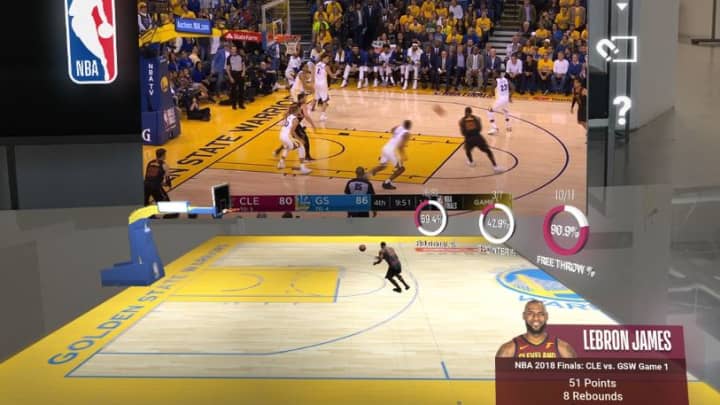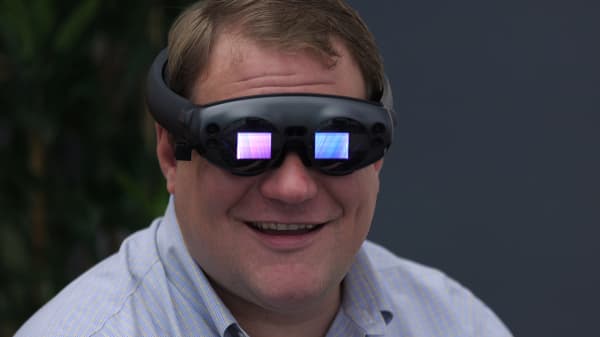- Joined
- Jan 20, 2004
- Messages
- 30,544
- Reaction score
- 19,533
Well the first headsets are showing up at development houses and there has been questions does it live up to the nearly 2 billion raised to design and build it.
First actual photographed images from inside of the headset and a look at the new optical system. No word yet from people about the head tracking and I have talked to people who have worked with optical tracking say it lags somewhat. This is due to the amounts of processing needed to make it work. It takes some substantial computing power or dedicated hardware to offload the processing even from the GPU or CPU.
NBA app. that they signed a deal with the NBA to bring out.




It uses 6 cameras to visualize and process the surroundings.
https://www.cnbc.com/2018/08/08/magic-leap-one-creators-edition-first-look.html
First actual photographed images from inside of the headset and a look at the new optical system. No word yet from people about the head tracking and I have talked to people who have worked with optical tracking say it lags somewhat. This is due to the amounts of processing needed to make it work. It takes some substantial computing power or dedicated hardware to offload the processing even from the GPU or CPU.
NBA app. that they signed a deal with the NBA to bring out.




It uses 6 cameras to visualize and process the surroundings.
https://www.cnbc.com/2018/08/08/magic-leap-one-creators-edition-first-look.html











